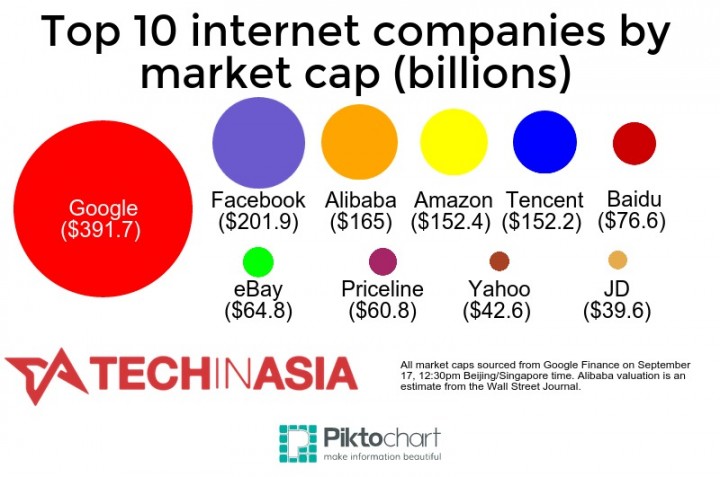Contents
Following is thus an elaboration on shareholder equity, its calculation, and its components for a general understanding. Thus, the shareholders’ equity is a marquee factor within a company’s balance sheet that gives investors a quick peep into the underlying financial strength of the company. In this formula, all the liabilities, current and long term, are summed and this is deducted from the total of all the assets of the company. The excess of assets over liabilities is the shareholders’ equity. Now that you know wealth maximisation’s meaning let’s know its advantages. When a business is performing well, it can use wealth maximisation as a strategic planning tool to maximise profits and shareholder value.
- Suppose Bajaj Auto’s most recent net income is Rs 3,828 crores and their total equity is Rs 17,034 crores.
- The market price is affected by various political and economic elements that are hard to forecast and evaluate.
- If a company has a low ROE, it means it has not used the capital invested by shareholders efficiently and vice versa.
- It is therefore internationally applicable and can be used across sectors.
Every Company has its own personal assets like office premises, factory machinery, etc., and also some investments. Apart from assets they even have certain long-term debts like loans that need to be paid back. Value of the firm is measured by calculating present value of cost flows of profits of the firm over a number of years in the future. Outstanding shares, thus, represent the par value of common stocks issued, alongside the par value of preferred shares that the company sells.
A stock or any other security representing an ownership interest, which might be in a private company in which case its called private equity. One major drawback of the tendency of corporations to focus on maximizing shareholder value is that it can lead to poor or unsustainable business practices. It provides a long term financial view on which to base strategic decisions. Subtract the value of debt from the total value to obtain the value of the firm’s shares. It serves as a guide to every decision from strategic planning to capital budgeting to acquisitions to operating decisions.
It was popularised in the 1980s and 1990s in conjunction with the management concept of value-based decision making. ROE and ROCE help you understand a company’s efficiency relative to the capital employed by the firm. However, ROCE is a superior measure to ROE as it focuses on the debt and equity of a company. Hence, investors may use ROCE to assess the performance of companies for whom the debt is an essential component. For example, companies with a higher return on equity than peers may generate higher returns for their shareholders.
Stockholders who object to a firm’s policies are free to sell their shares under more favorable terms than are available under any other strategy and invest their funds elsewhere. Economic value, shorty abbreviated as EV is used as a measure of business unit and company performance. The evolution of EV measures can be traced to Ricardo in the mid-1800s who used the term super normal rent to define EV. In the period of mid-1920s, General Motors used a measure called residual income to indicate the amount of income left over after paying for the various components of costs including a charge for capital. Consulting firm Stern Steward has created the idea of Economic Value Added. Economic Value Added is a valuable tool to measure the wealth produced by a company for its equity shareholders.
In practice, however, not all management decisions are consistent with this objective. In Marakan model, shareholder wealth creation is measured as the difference between the market value and the book value of a firm’s equity. According to the Marakon model, the market-to-book values ratio is function of thee return on equity, the growth rate of dividends, and cost of equity. For an all-equity firm, both EV and the equity-spread method will offer same values because there are no interest charges and debt capital to consider.
There are some disadvantages of this strategy, which we will discuss below. Profit maximisation requires a careful balance between retained earnings and dividends, but the benefits are well worth it. However, the inherent risks in wealth expansion cannot be compared with those of wealth maximisation. You may look for companies with steady and rising ROE over the past five to seven years to identify multibagger stocks. You may compare a company’s ROE across different periods to track the performance of the company’s management.
Locate and calculate a company’s total assets from its balance sheet for the period. In this regard, a company’s retained earnings are also included under the purview of SE. Retained earnings are not paid out to a company’s shareholders as dividends, but are instead reinvested to propagate the company’s growth. ET screener powered by Refinitiv’s Stock Report Plus lists down stocks with high upside potential over the next 12 months, having an average recommendation rating of “buy” or “strong buy”. Corporate governance is instable, with owners now demanding liability from corporate managers. Manifestations of the increased assertiveness of shareholders include the need for executives to justify their compensation levels, and well-publicized lists of underperforming companies and overpaid officials.
Company Info
It means that the company’s debt to equity ratio is skewed in an unconducive manner, a scenario that is not favourable. Should the shareholders’ equity continue to remain negative for consecutive years, the company faces a danger of liquidation. Issuing shares is a popular way for companies to raise funds. When an investor purchases such shares, they become shareholders of the company. Shareholders contribute to the company’s share capital, and in return, they get to own a stake in the company equivalent to their shareholding. The share capital becomes a permanent source of funding for the company, and is paid back to the equity shareholders only at the time of the company’s liquidation.

As it gives an overview of the company’s financial strength and indicates whether the company is in a position to do CAPEX or not. So the company will calculate the difference between its assets and loans in order to find the value of the company. It refers to the stocks that have been sold to stockholders but have not been repurchased by the company. It includes stocks that have been issued to company officers, public investors, company insiders and the likes.
Our Services
Because the returns offered to creditors are fixed whereas the returns to stockholders are variable, conflicts may arise between creditors and owners. In other words, there often may be a divergence between https://1investing.in/ the shareholder wealth maximization goal and the actual goals pursued by management. The primary reason for this divergence has been attributed to separation of ownership and control in corporations.

For an all equity firm, both EV and the equity spread technique will offer identical values because there are no interest charges and debt capital to consider. The second type of measures, it includes those that rely entirely on stock market data and, thus, are mainly applicable to exchange listed companies. These measures concentrate on the impact on shareholder wealth and use that as an indirect measure of annual . In the category of measures, there are hybrid value/wealth-creation measures and require both financial statement and stock market data. Though these terms are used interchangeably, there is some difference between value creation and wealth creation.
Return on Equity Formula:
You can determine profit after tax from a company’s income statement. It shows the company’s earnings before it pays out dividends to its shareholders. For instance, ROE shows you how companies utilise shareholders’ money. It is determined by measuring a company’s net profit by its net worth. For example, SE is a crucial component that is used for return on equity calculation, which in turn allows one to measure the company’s efficacy in utilising the equity from its investors for profit generation.

When this occurs, bondholders suffer because they do not have an opportunity to share in these higher returns. For example, when RJR Nabisco was acquired by KKR, the debt of RJR increased from 38 percent of total capital to nearly 90 percent of total capital. This unexpected increase in financial risk caused the value of RJR’s bonds to decline by nearly 20 percent. A potential agency conflict arises from the relationship between a company’s owners and its creditors. Creditors have a fixed financial claim on the company’s resources in the form of long -term debt, bank loans, commercial paper, leases, accounts payable, wages payable, taxes payable, and so on.
Profit maximisation refers to the practice of maximising profits in a business. It is important to remember that not all profits are created equal, and some profits are generated when a company sells inferior products to its competitors. The financial institutions, workers and shareholders all have a stake in the business. Return on Equity or ROE is one of the vital parameters for collecting information about a company.
Another disadvantage of shareholder value analysis is that estimation of future cash flows, a key component of SVA can be very difficult to complete precisely. This can lead to incorrect or misleading figures forming the basis of strategic decisions. Corporate governance is instable, with owners now demanding accountability from corporate executives. Exhibitions of the increased assertiveness of shareholders include the necessity for executives to rationalise their compensation levels, and well-publicized lists of underperforming companies and overpaid executives.
In such cases, customers may feel that the company has harmed them. The assumption that underlies the whole thing is an efficient capital market in which the price paid for the share is accurately represented. Save taxes with Clear by investing in tax saving mutual funds online. Our experts suggest the best funds and you can get high returns by investing directly or through SIP. Download Black by ClearTax App to file returns from your mobile phone. CAs, experts and businesses can get GST ready with Clear GST software & certification course.
Shareholder wealth in a firm is represented by___________.
In cases where the assets of the company exceed its liabilities, the shareholders’ equity would be positive. This means that the company has excess assets that can be used to pay back the shareholders should things go downhill. However, should the shareholders’ equity be negative, this is a warning for prospective and existing investors.
A wide diversity of opinion exists as to what corporate social responsibility actually entails. The concept is somewhat subjective and is neither perceived nor applied uniformly by all firms. As yet, no satisfactory mechanism has been suggested that specifies how these social responsibility commitments can be balanced with the interests of the owners of the firm. a stockholders current wealth in the firm is calculated by The objective of shareholder wealth maximization has a number of distinct advantages. First, this objective explicitly considers the timing and the risk of the benefits expected to be received from stock ownership. Similarly, managers must consider the elements of timing and risk as they make important financial decisions, such as capital expenditures.
You cannot gauge the performance of companies in different sectors. It shows that company is not financially strong thus decreasing the chance to raise more funds. Higher or positive net worth helps the company in improving future goals and setting the best future plans for the company.

